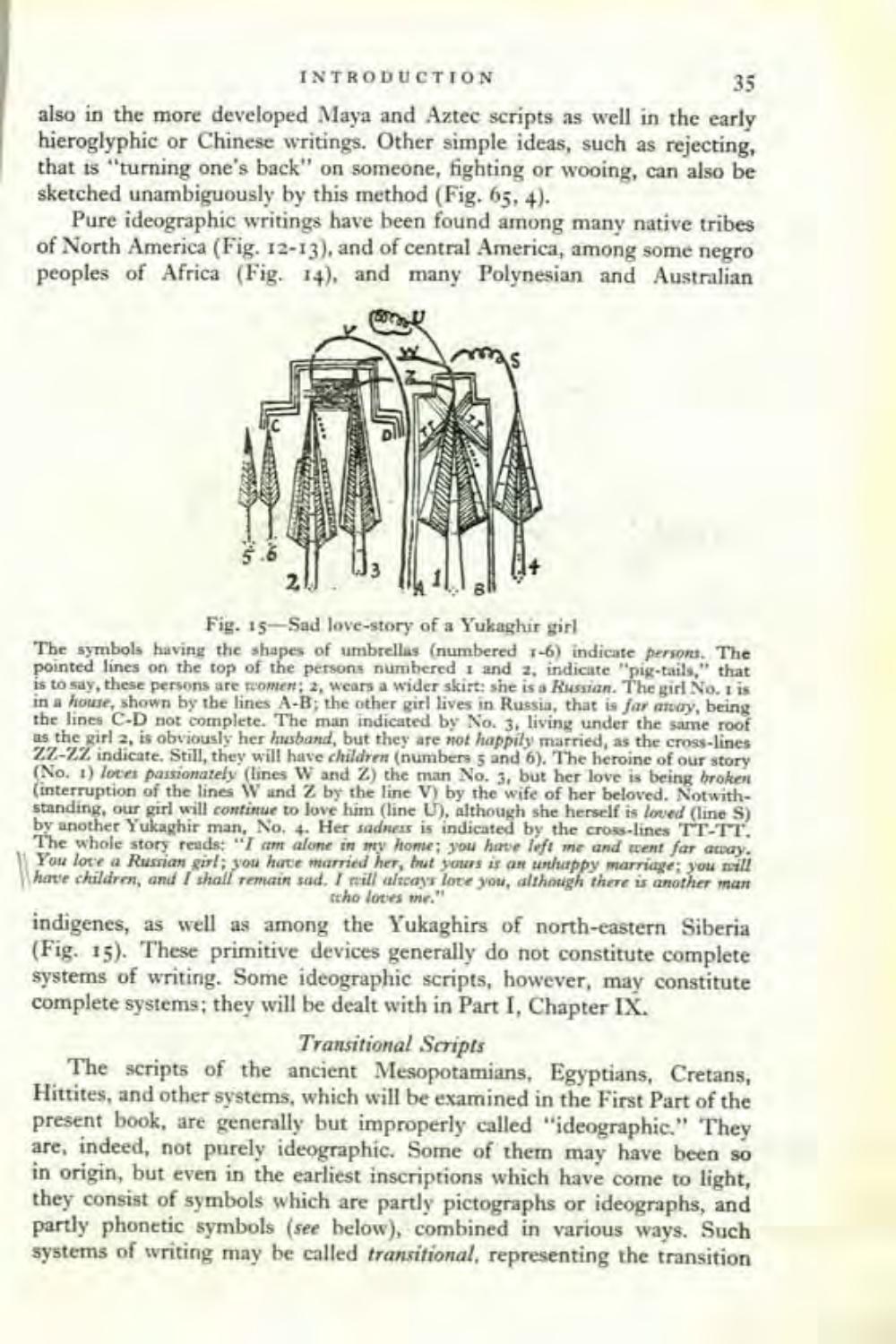________________
35
INTRODUCTION also in the more developed Maya and Aztec scripts as well in the early hieroglyphic or Chinese writings. Other simple ideas, such as rejecting, that is turning one's back" on someone, fighting or wooing, can also be sketched unambiguously by this method (Fig. 65, 4).
Pure ideographic writings have been found among many native tribes of North America (Fig. 12-13), and of central America, among some negro peoples of Africa (Fig. 14), and many Polynesian and Australian
2
Pave whole Stukashit moontinue to Z by the the ma
Fig. 15-Sad love-story of a Yukaghir girl The symbols having the shapes of umbrellas (numbered 1-6) indicate persors. The pointed lines on the top of the persons numbered 1 and 2, indicate "pig-tails," that is to say, these persons are comen: 2, wears a wider skirt: she is a Russian. The girl No. 1 is in a house, shown by the lines A-B; the other girl lives in Russia, that is far atoay, being the lines C-D not complete. The man indicated by No. 3, living under the same roof as the girl 2, is obviously her husband, but they are not happily married, as the cross-lines ZZ-ZZ indicate. Still, they will have children (numbers 5 and 6). The heroine of our story (No. 1) lotes passionately (lines W and Z) the man No. 3, but her love is being broker (interruption of the lines W and Z by the line V) by the wife of her beloved. Notwithstanding, our girl will continue to love him (line U), although she herself is loved (line S) by another Yukaghir man, No. 4. Her sadness is indicated by the cross-lines TT-TT. The whole story reads: "I am alone in my home; you have left me and went far away. You love a Russian girl, you have married her, but yours is an unhappy marriage you will have children, and I shall remain sad. I will alcays love you, although there is another man
cho loves me." indigenes, as well as among the Yukaghirs of north-eastern Siberia (Fig. 15). These primitive devices generally do not constitute complete systems of writing. Some ideographic scripts, however, may constitute complete systems; they will be dealt with in Part 1, Chapter IX.
Transitional Scripts The scripts of the ancient Mesopotamians, Egyptians, Cretans, Hittites, and other systems, which will be examined in the First Part of the present book, are generally but improperly called "ideographic." They are, indeed, not purely ideographic. Some of them may have been so in origin, but even in the earliest inscriptions which have come to light, they consist of symbols which are partly pictographs or ideographs, and partly phonetic symbols (see below), combined in various ways. Such systems of writing may be called transitional, representing the transition




